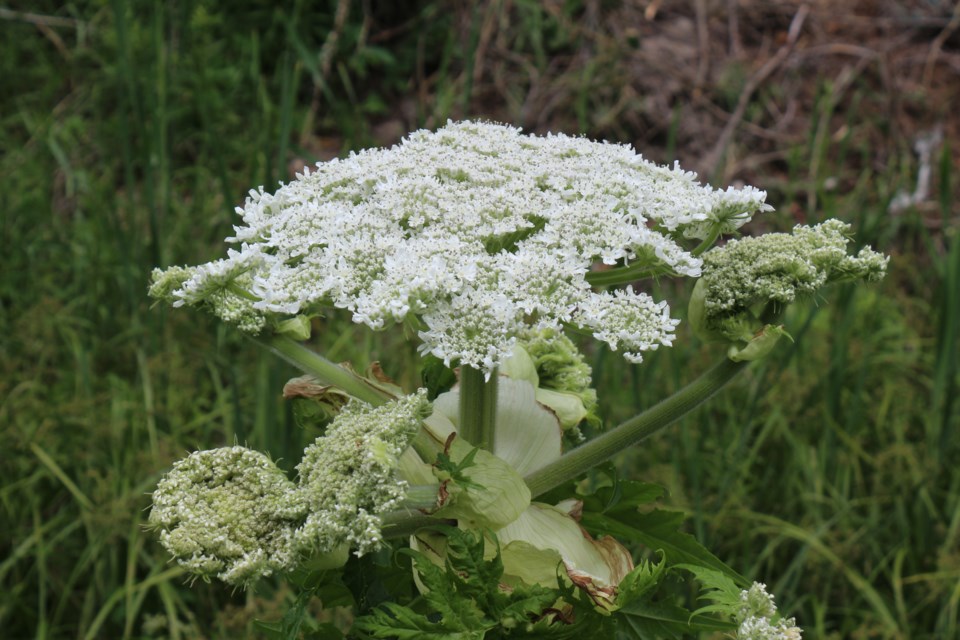The discovery of a giant hogweed plant near Attlee Avenue is a cause for action, but not concern, says Greater Sudbury's manager of environmental planning initiatives.
Steven Monet said the large plant has been in the city at least since 2010, when the first sighting was reported. Giant hogweed is an invasive species, the sap of which becomes toxic to humans if it gets on the skin and is exposed to sunlight.
It can grow as high as 14 feet and can cause blindness if the sap gets in the eyes and is exposed to the sun. Monet said media attention in 2010 led to a surge of “false positives” with many people getting giant hogweed confused with cow parsnip, a plant native to this area that looks the same and has the same sap, but is much smaller.
"So a lot of things people thought was giant hogweed, wasn't," he said. "At the same time, that got us to narrow down where the problem areas were. And to this day, we're still actively trying to eradicate the plant. It takes a few years."
Giant hogweed plants each produce hundreds of watermelon-like seeds, but fortunately they don't germinate all that successfully.
"But because of the latency of the seeds in the soil, there's always a few sprouting up,” Monet said. “But it's an issue that I feel we've got largely under control.
"The problem with the clusters we discovered in 2010 is that they had been here for a number of years. That had given the plants lots of time to establish themselves. (But) it's not like a dandelion that will easily spread by the wind. This one's a gravity one, it has a big seed like a watermelon. It just falls by gravity, and if it's carried down by stream or something like that, it can take root theoretically somewhere else. But not many of those seeds will actually germinate into a plant."
The city has received about a dozen calls from residents about the hogweed on Attlee.
“That's a well-know spot for us. This one was ID'd obviously as giant hogweed and it took about a week to get to the plant and remove it."
Monet will either go to the site to confirm the plant's identity, or more often will ask residents to send in a photo. While it's not certain how the plant got to northeastern Ontario, he said the most likely answer is from people's gardens.
"It was intentionally brought here because it was an impressive-looking garden plant," he said.
Giant Hogweed
- An invasive species that likely was planted in some local gardens and spread from there.
- Exposure to the sap of Grant Hogweed causes sensitivity to light, which can result in serious skin burns and blisters. If the plant comes into contact with the eye, it can cause temporary or permanent blindness.
- If the sap gets on your skin, wash the affected area immediately. Keep the affected area out of the sun and see a physician if you have a reaction.
- The city will remove the plant when it's on city property, but homeowners must remove plants if they appear on their property. Instructions on how to do that can be found here.
- To report a suspected sighting, call the city's main number for service, 311.
